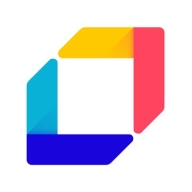

Microsoft Defender for Cloud and Trivy compete in the cloud security category. Defender's comprehensive feature suite gives it an advantage in broader security coverage, while Trivy's specialized capabilities excel in container scanning and CI/CD integration.
Features: Microsoft Defender for Cloud provides comprehensive security suggestions, streamlined integration with Microsoft services, and multi-cloud support with security scores and monitoring. Trivy offers robust CI/CD integration, container image scanning, and infrastructure code evaluation, ideal for DevOps environments.
Room for Improvement: Microsoft Defender for Cloud needs better customization of security recommendations, fewer false positives, and clearer documentation for complex setups. Trivy lacks a user interface, PDF reporting, and optimized dynamic scanning functionalities. Both could improve on customizable reports.
Ease of Deployment and Customer Service: Microsoft Defender allows hybrid deployment across clouds with inconsistent customer service support and complex setup. Trivy is straightforward to deploy but lacks a dedicated support system, relying on community resources.
Pricing and ROI: Microsoft Defender for Cloud, despite high pricing, offers returns due to integrated features. Trivy's open-source nature eliminates costs, making it financially attractive for container security solutions without licensing fees.
| Product | Market Share (%) |
|---|---|
| Trivy | 6.0% |
| Microsoft Defender for Cloud | 6.6% |
| Other | 87.4% |


| Company Size | Count |
|---|---|
| Small Business | 26 |
| Midsize Enterprise | 7 |
| Large Enterprise | 45 |
| Company Size | Count |
|---|---|
| Small Business | 3 |
| Midsize Enterprise | 1 |
| Large Enterprise | 9 |
Microsoft Defender for Cloud is a comprehensive security solution that provides advanced threat protection for cloud workloads. It offers real-time visibility into the security posture of cloud environments, enabling organizations to quickly identify and respond to potential threats. With its advanced machine learning capabilities, Microsoft Defender for Cloud can detect and block sophisticated attacks, including zero-day exploits and fileless malware.
The solution also provides automated remediation capabilities, allowing security teams to quickly and easily respond to security incidents. With Microsoft Defender for Cloud, organizations can ensure the security and compliance of their cloud workloads, while reducing the burden on their security teams.
Trivy offers comprehensive scanning for files, images, repositories, and infrastructure. It's open-source and integrates with CI/CD for vulnerability detection and security enhancement.
Trivy scans vulnerabilities in code, Docker images, containers, and infrastructure. It integrates seamlessly into DevOps pipelines, ensuring security in dependency management and open source vulnerabilities. This tool, lightweight and open-source, provides user-friendly reports and supports continuous vulnerability database updates, fostering ease of use across operating systems. Users benefit from its scanning capabilities, covering Kubernetes, AWS credentials, and GCP service accounts, effectively identifying vulnerabilities and misconfigurations.
What are Trivy's key features?In industries like technology and finance, Trivy is used extensively to secure applications, perform compliance checks, and offer security metrics visualization. It addresses microservices, container systems, and Kubernetes clusters security requirements, supporting DevOps teams and enhancing codebase analysis precision.
We monitor all Container Security reviews to prevent fraudulent reviews and keep review quality high. We do not post reviews by company employees or direct competitors. We validate each review for authenticity via cross-reference with LinkedIn, and personal follow-up with the reviewer when necessary.